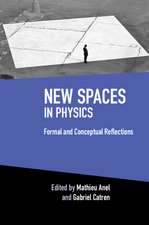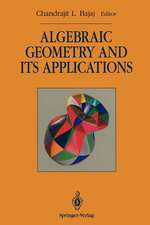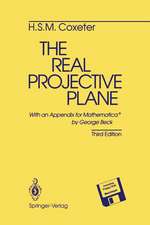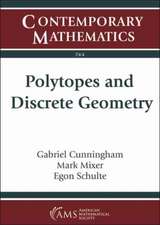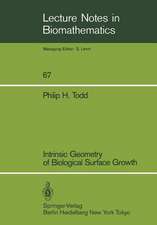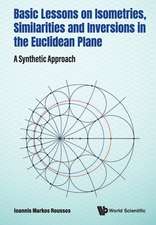Geometric Integration Theory: Cornerstones
Autor Steven G. Krantz, Harold R. Parksen Limba Engleză Hardback – 12 aug 2008
Din seria Cornerstones
- 18%
 Preț: 857.36 lei
Preț: 857.36 lei - 15%
 Preț: 530.42 lei
Preț: 530.42 lei - 15%
 Preț: 590.63 lei
Preț: 590.63 lei - 18%
 Preț: 809.25 lei
Preț: 809.25 lei - 5%
 Preț: 351.06 lei
Preț: 351.06 lei - 5%
 Preț: 351.02 lei
Preț: 351.02 lei - 18%
 Preț: 915.32 lei
Preț: 915.32 lei -
 Preț: 412.19 lei
Preț: 412.19 lei -
 Preț: 453.01 lei
Preț: 453.01 lei - 15%
 Preț: 760.94 lei
Preț: 760.94 lei - 15%
 Preț: 670.64 lei
Preț: 670.64 lei - 15%
 Preț: 598.50 lei
Preț: 598.50 lei - 15%
 Preț: 541.72 lei
Preț: 541.72 lei - 15%
 Preț: 607.01 lei
Preț: 607.01 lei - 15%
 Preț: 509.24 lei
Preț: 509.24 lei - 9%
 Preț: 748.84 lei
Preț: 748.84 lei
Preț: 647.40 lei
Preț vechi: 761.65 lei
-15% Nou
Puncte Express: 971
Preț estimativ în valută:
123.89€ • 134.53$ • 104.07£
123.89€ • 134.53$ • 104.07£
Carte tipărită la comandă
Livrare economică 22 aprilie-06 mai
Preluare comenzi: 021 569.72.76
Specificații
ISBN-13: 9780817646769
ISBN-10: 0817646760
Pagini: 339
Ilustrații: XVI, 340 p. 33 illus.
Dimensiuni: 155 x 235 x 23 mm
Greutate: 0.61 kg
Ediția:2008
Editura: Birkhäuser Boston
Colecția Birkhäuser
Seria Cornerstones
Locul publicării:Boston, MA, United States
ISBN-10: 0817646760
Pagini: 339
Ilustrații: XVI, 340 p. 33 illus.
Dimensiuni: 155 x 235 x 23 mm
Greutate: 0.61 kg
Ediția:2008
Editura: Birkhäuser Boston
Colecția Birkhäuser
Seria Cornerstones
Locul publicării:Boston, MA, United States
Public țintă
ResearchCuprins
Basics.- Carathéodory’s Construction and Lower-Dimensional Measures.- Invariant Measures and the Construction of Haar Measure..- Covering Theorems and the Differentiation of Integrals.- Analytical Tools: The Area Formula, the Coarea Formula, and Poincaré Inequalities..- The Calculus of Differential Forms and Stokes’s Theorem.- to Currents.- Currents and the Calculus of Variations.- Regularity of Mass-Minimizing Currents.
Recenzii
From the reviews:
"This is a graduate textbook with the main purpose of introducing geometric measure theory through the notion of currents. … One of the most important features of this text is that it is self-contained … . The book also contains an Appendix … as well as extended list of references, making it a good text for a graduate course, as well as for an independent or self study." (Mihaela Poplicher, The Mathematical Association of America, March, 2009)
"The book under review succeeds in giving a complete and readable introduction to geometric measure theory. It can be used by students willing to learn this beautiful theory or by teachers as a basis for a one- or two-semester course." (Andreas Bernig, Mathematical Reviews, Issue 2009 m)
“The authors present main fields of applications, namely the isoperimetric problem and the regularity of minimal currents. The exposition is detailed and very well organized and therefore the book should be quite accessible for graduate students.” (R. Steinbauer, Monatshefte für Mathematik, Vol. 162 (3), March, 2011)
"This is a graduate textbook with the main purpose of introducing geometric measure theory through the notion of currents. … One of the most important features of this text is that it is self-contained … . The book also contains an Appendix … as well as extended list of references, making it a good text for a graduate course, as well as for an independent or self study." (Mihaela Poplicher, The Mathematical Association of America, March, 2009)
"The book under review succeeds in giving a complete and readable introduction to geometric measure theory. It can be used by students willing to learn this beautiful theory or by teachers as a basis for a one- or two-semester course." (Andreas Bernig, Mathematical Reviews, Issue 2009 m)
“The authors present main fields of applications, namely the isoperimetric problem and the regularity of minimal currents. The exposition is detailed and very well organized and therefore the book should be quite accessible for graduate students.” (R. Steinbauer, Monatshefte für Mathematik, Vol. 162 (3), March, 2011)
Textul de pe ultima copertă
This textbook introduces geometric measure theory through the notion of currents. Currents—continuous linear functionals on spaces of differential forms—are a natural language in which to formulate various types of extremal problems arising in geometry, and can be used to study generalized versions of the Plateau problem and related questions in geometric analysis.
Key features of Geometric Integration Theory:
* Includes topics on the deformation theorem, the area and coarea formulas, the compactness theorem, the slicing theorem and applications to minimal surfaces
* Applies techniques to complex geometry, partial differential equations, harmonic analysis, differential geometry, and many other parts of mathematics
* Provides considerable background material for the student
Motivating key ideas with examples and figures, Geometric Integration Theory is a comprehensive introduction ideal for use in the classroom and for self-study. The exposition demands minimal background, is self-contained and accessible, and thus is ideal for graduate students and researchers.
Key features of Geometric Integration Theory:
* Includes topics on the deformation theorem, the area and coarea formulas, the compactness theorem, the slicing theorem and applications to minimal surfaces
* Applies techniques to complex geometry, partial differential equations, harmonic analysis, differential geometry, and many other parts of mathematics
* Provides considerable background material for the student
Motivating key ideas with examples and figures, Geometric Integration Theory is a comprehensive introduction ideal for use in the classroom and for self-study. The exposition demands minimal background, is self-contained and accessible, and thus is ideal for graduate students and researchers.
Caracteristici
Self-contained, inclusive, and accessible for both the graduate students and researchers Motivates the key ideas with examples and figures Includes considerable background material and complete proofs


